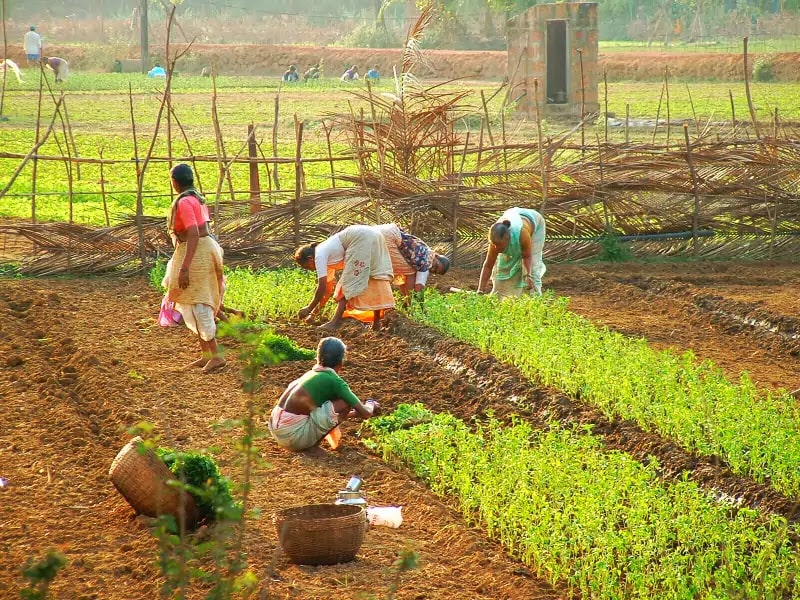The term monoculture in farming refers to the expanding of a single plant over a huge area. Monoculture is the norm in most massive commercial agriculture in the U.S. and in lots of parts of the globe. Monoculture has particular temporary advantages, mostly in terms of economic climate of scale, as well as automation of the manufacturing process (and thus decrease of labor prices). However, in the lasting, the drawbacks of monoculture are frustrating – this farming method has countless unfavorable results on the atmosphere, and additionally, these unfavorable impacts often tend to end up being amplified over the long-run. This write-up evaluates the advantages and disadvantages of this sort of consistent method to agriculture, and also indicate some different practices that are much more sustainable, both environmentally and economically, and therefore exceptional on all counts in the long-run.
Benefits and drawbacks of monoculture farming: what are its benefits?
It is right away noticeable that I am not a follower of or advocate for monoculture. However there are some straight as well as strongly engaging reasons that people participate in this devastating technique. Prior to we discuss why this method is so hazardous, I discover it productive to very first analyze its advantages or benefits.
The main advantage is economic climate of scale, mainly through automation. Particularly in the UNITED STATE, labor expenses are really high, so anything that can reduce making use of labor in agriculture is very likely to lead to price savings. This is usually real even when the automation minimizes yield per acre. For instance, if a crop has been grown, it can usually be gathered in various means, with various levels of automation. Greater automation in collecting could lead to better waste, such as grain left in the fields, but if it requires less labor (such as a single person driving a huge maker which covers the ground extremely rapidly, rather than numerous people driving smaller sized, slower equipments, or many individuals harvesting the plant by hand) it may transcend in a cost-benefit analysis, even if it leads to better waste.
Drawbacks of monoculture farming:
The most compelling downside of monoculture farming is that it is not adaptable. Wild ecological communities vary, and wild populaces of plants and also animals are likewise diverse. An ecosystem consists of many different varieties, each with unique adaptations to its setting, as well as distinctive strengths and weaknesses in reaction to altering problems. In a similar way, the all-natural population of a plant or animal varieties has genetic irregularity, and also each individual plant or pet has a little different attributes. Additionally, each populace, and the community overall, is regularly altering, adjusting to the altering environmental conditions and also the problems imposed by the other populaces and species in the system.
Monoculture ravels this variability, ruining the diversity and also replacing it with, at best, a solitary species, and also at worst (as is the standard in the UNITED STATE), a single cultivar – rows and also rows of genetically identical plants, basically cloned, recreated with cuttings or genetically engineered seed supply.

Susceptibility to insects:
The eco-friendly landscape of monoculture is that there is a large series of genetically identical plants, versus a background of wild bugs, that include fungis, germs, pests, as well as numerous other microorganisms. These insects each have a wild populace with its very own biodiversity, as well as their populations are constantly altering and adapting to being able to eat the plants or benefit from the presence of whatever crops are being expanded. The monoculture plants, nevertheless, are not.changing, and are not able to adjust due to the fact that they have no genetic variability and also are not enabled to duplicate naturally. Plant bugs, weeds, additionally adjust, seeding right into the fields of plants, benefiting from the extra sunlight, as most monoculture plants let through enough light as well as are not making full use of the sunlight’s power.
The only method to manage bugs in this setup is to expend ever-greater power as well as resources on chemical control, either via the splashing of pesticides, fungicides, or bactericides on crops, or with the genetic modification of crops to allow them to produce these chemicals themselves. Yet without the natural adjustment, insects will ultimately evolve to stand up to any one of these defenses. The arrangement of monoculture is naturally doomed, as it is working against the all-natural ways in which ecological communities function. It is completely unsustainable in the long-run.
Visit their page where you will find tips and benefits of urban agriculture.




